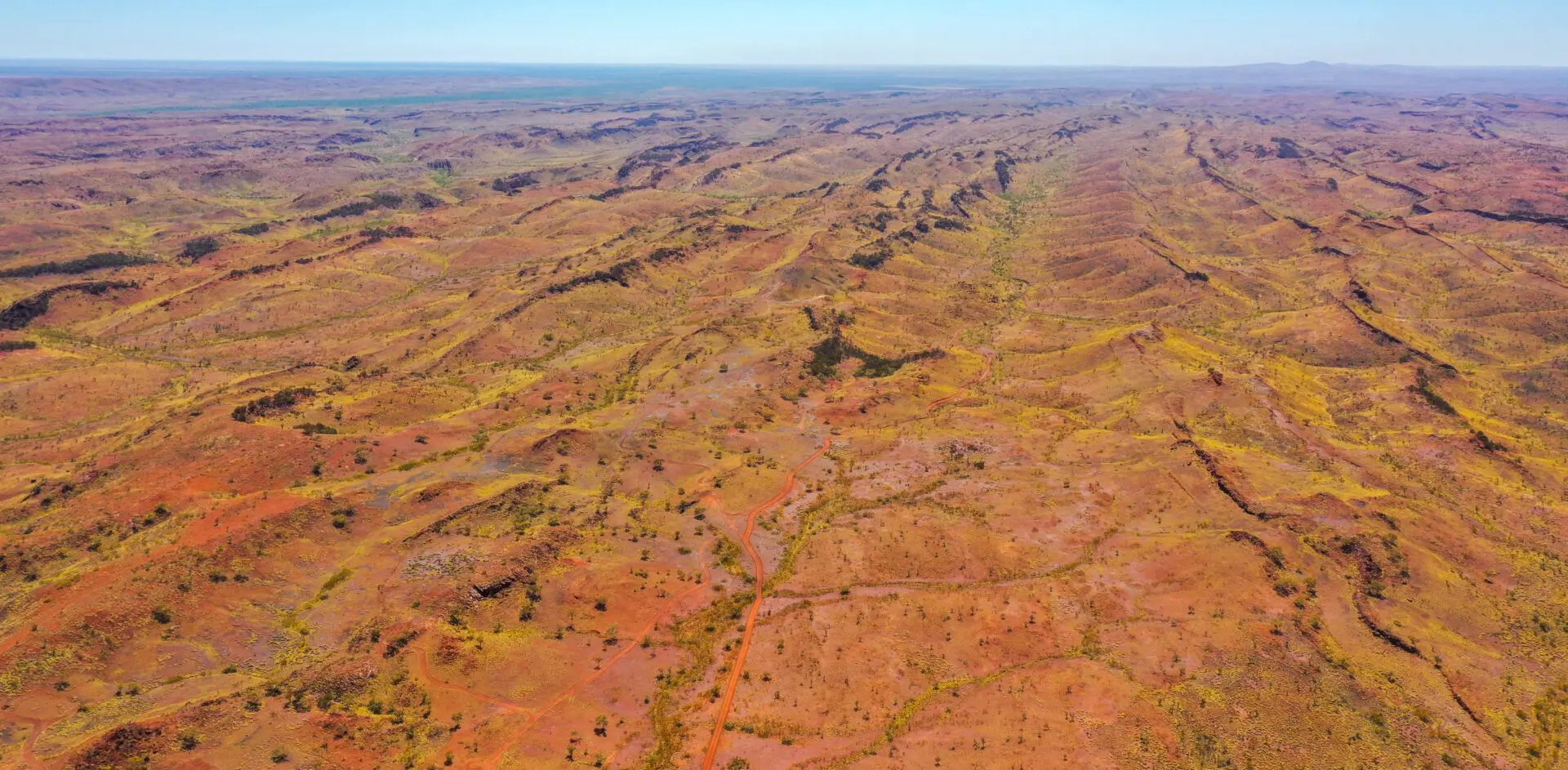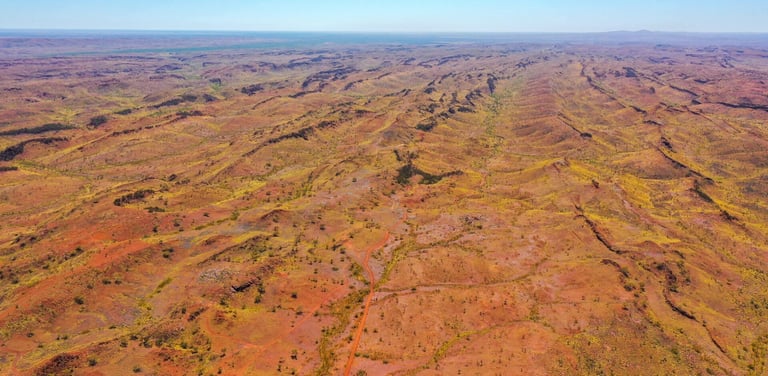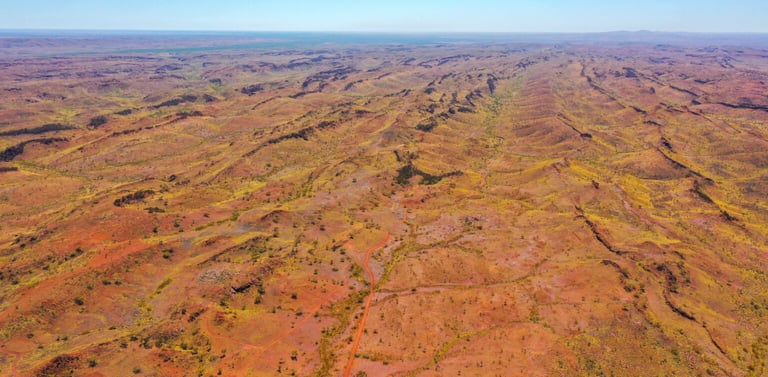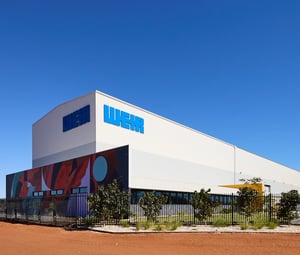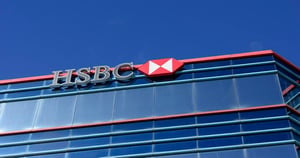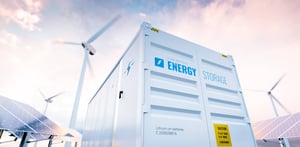Alien Metals Limited (LON:UFO) is the topic of conversation when Investment Strategy’s Financial Analyst Charlie Archer caught up with DirectorsTalk for an exclusive interview.
Q1: Charlie, what are the key reasons behind the significant drop in Alien Metals’ share price over the past year?
A1: Well, I think there’s a few reasons there. As per usual in the mining space, no matter what anybody tells you, there’s always going to be delays in getting project financing over the line. Companies always seem to be too optimistic about how long it’s going to take, dotting all those I’s, crossing those T’s. I think it is now finally going to get there very shortly but the past few months haven’t been kind.
On top of that, the former CEO leaving at the end of last year hasn’t helped sentiment and beyond that, until you get that financing in place, the only way really to keep going is share placings, which aren’t helping sentiment either.
It’s worth bearing in mind that this project financing for Hancock is something which very, very hopefully is going to be sorted out within the next two or three months, and assuming that happens, it will all be water under the bridge.
Q2: Are there any remaining underlying problems that still need to be addressed?
A2: Underlying problems that need to be addressed? I don’t think so.
I think that you do need to get a new CEO in at some point, but the company is very keen to make sure that it’s the right person that you get on board rather than jumping into whoever happens to be available at the moment. Beyond the issues that they’ve had in terms of delays, I think that’s it.
I think we now have a decent job for the loss of the project. We know roughly how much money is going to be needs to be spent, we know that this is something that should be relatively easy to finance.
All that put together means the problems of the past should be in the past, and we can now look forward.
Q3: How does the company’s current market cap compare to its potential value based on the Hancock Iron Ore project?
A3: Well, I think it’s probably best to compare to the other companies within the region, at the moment, to me, it looks like UFO is severely undervalued.
So, we compare to Phoenix Resources listed on the ASX, this is another Western Australia DSO project, similar kind of grade, similar tonnage. Phoenix has 9.8 million tonnes at 64.4% iron and then main construction of this project started in September 2020, after some fairly weak sentiment, and then three months later in December 2020, it was producing and then sales in February 2021. Its share price just rocketed.
CSA Global has been appointed to consult on Hancock and this was the firm that was integral to Phoenix’s success and rise to AU$250 million.
By comparison, Alien Metals is suffering along with a really, really small market cap. You also have companies like Macro Metals or Arrow Minerals, GWR Group, Arrow controls the Simandou North Iron Project and it’s got a market cap of $90 million, but it’s only in the exploratory phase, it’s nowhere close to thinking about building a mine. GWR Group, it just sold the remainder of Wiluna West, and that held 130.3 million tonnes, again, iron grade of 60% and it sold it for AU$30 million and a $2 DMT royalty.
So, I think in terms of when you’re looking at Alien Metals, and you’re saying, well, you know, they haven’t got this over the line. A lot of these companies are exactly the same thing. They’ve had the same kind of sentiment problems and by comparison, their market cap is only maybe between £8 million and £9 million. It fluctuates at the moment.
Q4: What’s the significance of the JORC resource for the Hancock Project?
A4: Well, the JORC resource, spilling the actual number out here, it’s 8.4 million tonnes at 60.2% iron and that includes an upgraded indicated resource, that’s really important, the indicated part of 4.5 million tonnes at 6.2, and a mining inventory of 3.9 million tonnes at 58.5% iron.
Now, there’s two things here. The first is the JORC resource. JORC, as you know, anyone listening here, is a very protected term, it’s not something a company can just rubber stamp essentially. It’s a standard benchmark that’s set to assets.
So, Alien Metals has a really valuable project that is worth more than its market cap at the moment and that’s an objective statement. I don’t think that’s something that’s subjective, that’s just what any analyst would say, and yes, and this grading, the tonnage is comparable to all these other companies in the area that have much higher market capitalisations.
Now, the upgraded indicated resource at 4.5 million tonnes at 6.2%, an indicated resource is a very, very strong confidence that the iron is there, that the value is there, and that you have an asset that you’re going to be able to deliver economically. Again, it’s just a question of getting the financing to get it out of the ground.
Q5: How does the iron ore quality and reserve size, how does that compare to those other projects?
A5: In terms of the iron ore quality, what you’re looking for is the 60% which is the magic number, and Alien’s joint resource is at 60.2.
So if you can look at Phoenix, it’s 64.4%, so it’s a little bit higher but then other deposits in the area, so GWR, they have a 60% iron, so it’s slightly lower and there’s a few that are even lower than 60%, in the mid-50s. So, the grade is perfectly adequate.
In terms of tonnage, 8.4 million tonnes, nothing to be sniffing at, and perfectly viable.
Q6: What are the projected financial metrics for the project?
A6: So, you’re looking at a mine rate of 1.25 million tonnes per annum, and that’s only on 20% of the tenement that’s been explored so far. It’s a six-year mine life, and then a really, really low 1 to 2.2 strip ratio on the ridge ore bodies, this is incredibly low. It’s an open pit operation, so it should be relatively simple. You’re looking at just mobile crushing, screening, and processing, it’s a DSO project., none of the tricky bits that come later.
In terms of capital requirements, CapEx, AU$28 million but the C1 operating costs less than US$65 US per tonne, and OpEx all in, US$85 per ton.
So you take that all together, you’ve got a pre-tax net present value of au$146 million Australian dollars, with the typical 10% discount rate, and a pre-tax internal rate of return of 133%.
Now, that’s just the standard numbers that we’ve got there. If you’re using a 10 million tonne mining inventory with a high case and an extended mine life, you could be looking at a pre-tax IRR that goes from 133% to as high as 228%.
So, when we’re looking at the financial metrics here, this is all very attractive. Even in the base case scenario, you’re looking at a payback period of less than 12 months. So, if you’re approaching potentially a joint venture partner, or a bank for a term sheet, they’re going to get their money back potentially in less than a year.
Unlike other projects, like lithium projects, for example, or gold projects, obviously very common and popular in Western Australia, this is the DSO shipping project, it’s something where it’s very difficult for the mine to go wrong or for the mine build to have any kind of complexity, in my view. Whereas we all know that when you’re building a lithium operation or a gold operation, it tends to be the case that there’s delays or problems, just because they’re just harder materials to work with.
Q7: How does the location of the Hancock project benefit its potential development and operation?
A7: It’s West Australia so it’s the best location pretty much in the world for mining. Yes, you could argue Nevada in the US, or perhaps Athabasca in Canada, maybe Ontario but this is the jurisdiction that people want to be in.
If you look at the neighbours, neighbouring Hancock, there’s Rio Tinto, there’s Fortescue, there’s Hancock Prospecting, Gina Reinhart, there’s BHP. These are all titans, they’ve got world class deposits clustered around, and once operations are underway, I think there’s reasonable potential for a buyout with one of these majors, because they have such large processing plants of excess capacity.
It seems to me that, once you’re proving practically that this iron ore is, something that you can sell and make money out of, it’s something they’re going to be interested in.
Rio Tinto and BHP both explored this tenure at one point. The asset, again, it’s just 17 kilometres from Newman, which is a combined BHP-Rio Tinto mining hub, and just over 400 kilometres from Port Hedland, essentially, all this iron ore is going to be sent to China, generally, and Port Hedland goes direct to China. So, in terms of location, fantastic, and on top of that, you could even put in a third-party rail, only 100 kilometres away.
So yes, if you were looking on a map, you’d probably put a pin and say, this is exactly where we want to be and that’s one thing, I think nobody, no investor could say they have any problem with.
Q8: There must be challenges or risks, though, what kind of challenges does the company face just bringing the project into production?
A8: Well, assuming they get financing over the line, it’s really tricky because this is building a mine, right, so there’s always going to be some kind of challenges. Anybody who’s ever built a mine, anyone you’ve ever spoken to who’s done it, there’s always something that crops up, that might delay you a couple of weeks, or parts break, or maybe you have a slightly higher requirement than you thought, there’s always something.
But this is a direct shipping ore project. You’re literally drilling holes, pulling down explosives, blasting the rock out of the ground, crushing it, sorting it a little bit, and then sending it on its way.
There’s very little, technically that I believe, can go wrong with a DSO project and that’s why they’re so popular in Western Australia, because particularly for financing, but just in general, it’s quick payback time, it’s technically not difficult.
When you ship the ore off to generally, to plants in China, or potentially, it might be the case that this ore goes to one of those mining hubs that I just mentioned, and gets processed further over, later on in the day. But actually, technically, once you’ve got the mine up and running, I can’t see any kind of problems, other than the standard typical ones that tend to crop up.
Q9: Why is Alien Metals also exploring silver and PGMs and how might that affect their focus on the Iron Ore project?
A9: The first thing to bear in mind is that Pinderi Hills is not the flagship so the corporate focus right now is getting project financing through for Hancock.
Having said that, what you have at Pinderi Hills with Elizabeth Hill and the silver is really, really interesting. It’s important to note that lithium on the assets on the exploratory portfolio is being funded via a joint venture with Errawarra and therefore, there’s almost no downside risk for that joint venture because it’s being funded by another partner.
In terms of looking for silver, looking for PGMs, we don’t know this yet, but it seems to me that they might want Hancock to be run predominantly by whichever joint venture partner they bring on board. So, there’s a good chance there’s going to be excess management, time capacity to focus on Pinderi once that’s all up and running.
Again, it’s exactly what I was saying before about a DSO operation, even if they’re running it themselves, it’s not something that’s particularly difficult to organise and to run. It’s unlikely that you’re going to run into any kind of complications that require director time.
Q10: Just speaking about management, what is the current status of the management team, and how might it impact the company’s strategy and operation without the CEO that you mentioned earlier?
A10: Well, they have a mining manager now and plenty of mining companies in Australia work well without a CEO. My view is that they need to get a Chief Executive Officer in but having had the last one leave at the end of the last year, when people potentially weren’t expecting it, they don’t want to rush in and just pick anybody. They want to get the right person for the job.
That makes sense to me because they do have significant technical and financial experience on the management team already and so they have the luxury of waiting to get the right person in for the top job.
I have seen and I think you’ve probably seen it as well, where a CEO leaves and you just get whoever happens to be available and it’s a disaster. Like in any job, what you want to do is you want to take your time, you want to find the right person, and when the right person comes knocking, you then put them in and then everything goes according to plan.
Q11: How does the iron ore market, particularly in relation to demand from China, impact the company’s prospects?
A11: It’s difficult because the iron ore that’s being sent to China, almost all the iron ore in Australia is imported to China, China is the largest iron ore importer in the world and that iron is predominantly used on the real estate market, which comprises, depending on who you talk to, between 30-40% of China’s GDP. So it’s incredibly important.
Real estate has taken a huge hit during the pandemic and going forward into 2024 and China is doing its level best to help the real estate markets, to prevent any kind of crash. If you’ve ever heard of these large Chinese housing corporations that’ve got run into difficulty, and China is trying to help, but at the same time doesn’t want to cause a bubble in its own economy so it’s a delicate balance.
It seems to me that as long as the Chinese economy is growing over time, and it continues to grow regardless of the headlines, and as long as the US-China trading relationship continues to remain strong, you’re going to see continued significant demand for iron ore from China.
I suspect perhaps the only potential issue might be that the Chinese implement some kind of pricing mechanism, they say this is the max we’re going to pay for iron ore. It’ll still be something profitable, but it might be they decide that if it ever gets too hot, then they’re going to stockpile it, and just wait for the prices to come back down.
I would say that the only potential geopolitical real risk, and China and the US have been butting heads for a long time about various problems, but it’s Taiwan and I think there’s that Damocles over the global economy of China that decide to invade Taiwan or take it by force. Obviously, huge implications for geopolitics and for artificial intelligence as well but I think that that’s the black swan scenario that anyone should really be worrying about when it relates to DSO iron ore projects in Western Australia.
Q12: What comparisons can be made between Alien Metals and other similar companies in the iron ore sector?
A12: Iron ore DSO, as I’ve said a couple of times now, it’s a very common strategy. If you want to go down the further processing and steel production, it becomes a lot more complex, there’s so much more that can go wrong. Obviously, because of that, it tends to be that you can make more money.
When it comes to a company with, at the moment now, less than £10 million market cap, what you really want is a very easy project with very compelling economics.
Now, when you look at like similar companies in the iron ore sector, there’s a few that I’ve mentioned up there, but the reality is that when we’re looking at Western Australia, they are surrounded by Rio Tinto and BHP and Hancock Prospecting, all of these giant companies are all in the same kind of sector. They’re all making masses of money and I think there can be, in the small cap space in particular, this idea that by not going down the generating steel route or processing it further, you’re leaving profit on the table.
That’s probably fair to say, but at the same time, companies that go down the DSO, direct shipping or this route, because the plant is so easy to build, because it’s so easy to ship it to China, because you have a willing customer in China right there, you just have to get it 400 kilometres away to the nearest port, it’s very compelling.
It’s very easy to sell the story, it’s quite easy to get hold of finance. Having said that, getting hold of finance always takes far longer than anyone ever thinks. If you’ve ever spoken to a banker, you’ll know how difficult it can be.
Q13: Just thinking about finance, how does Alien Metals plan to finance the development of the project and what progress has been made in securing the financing?
A13: So, the general idea is, what do we want to see? We have Guy Robertson, who’s the Executive Director. The most recent update, this is on the 20th of June of this year, and it’s a direct quote from the RNS:
“Negotiations continue with potential funding partners with regards to the Hancock project”
Now, what does that mean? Yes, it could be a joint venture, it could be an earning of some kind, it could be a term sheet. Term sheets are really popular in this area of the world, it might be a simple term sheet but again, when you’re looking at the CAPEX requirement, it’s so small, and the payback time is so quick, getting potential funding partners isn’t the difficulty, it’s just the time it takes to have these things signed off, in the meantime, sentiment is struggling a little bit.
But again, just look at Phoenix, how quickly these things can rise, you start, you get the finance in place, you start building the mine, three months later, it’s built, and two months later, you’re starting to sell. In that time, the share prices are rocketing the whole time.
Now, we had a placing recently at a discount, which again, has hit sentiment a little bit, but now this is enough cash runaway to last for several months and it looks like it’s going to get done over this time.
A key piece of evidence, I would say the share prices are trading for 0.12p on the London Stock Exchange, but independent non-executive director, Ms. Elizabeth Henson, and her family, instead of cash shares, she was issued 6 million new common shares at 0.2p per share. So almost double, she took in payment in shares, the share price of where it is now so if that doesn’t tell you that there’s confidence, at least on the managerial level, that they’re going to get something over the line very soon, I don’t know what to tell you.
All of this together, compelling economics, the right place in the world, a very, very simple iron ore project, management happy to take payment in shares and a significant premium to what the current share price is, all together, this tells me that Alien Metals is going to get over the line over the course of the summer.
Q14: Charlie, one final question for you. What would you prefer outright sale, joint venture, or term sheet?
A14: It’s very tricky. When it comes to projects like these, there’s different trade-offs. What do you do? What do you choose?
An outright sale is very clean, I think it’s the best thing to say. If they come along and they say, right, we’ll buy this asset from you for three times what your market capitalisation is, and you have an exploratory portfolio, that can be very difficult to turn down.
At the same time, if you look at a joint venture, especially where your joint venture partner is very experienced, or perhaps one of the larger players in the region, and they’re taking over management of the mine, that’s a constant revenue stream for many years, which is going to be more than what you’d be paid, off that one-off payment, and sets the company up for a significant period of time.
An independent turnsheet is the most interesting, and I would say arguably the higher risk, very much higher reward choice because with an outright sale, you’re effectively getting a big wedge of cash, but whoever buys it from you is planning to make more money from it than what they paid you, right? That’s obvious.
With a joint venture partner, you’re giving up a chunk of the asset in return for financing and effectively a relatively stress-free life. With the independent term sheet, the general idea is that, yes, they have some kind of security, whoever gave the money to you would have some kind of security over Hancock.
At the end of the day, once the term sheet is paid off, the asset is yours, the profits are yours, but the risk is all yours as well.
My personal view, I would personally prefer a joint venture because I think it strikes the right balance between retaining as much of the possible profits as possible while minimising the risks. But I can understand why an independent term sheet might be the way to go in this particular asset, simply because DSO projects are so easy and because they have a management and mining team that knows how to do it.
So if this, for example, was a lithium project or a gold project, I would say don’t do the independent term sheet because the risks are too high, because we know that things that difficulties crop up when you’re building mines of those kind of assets. But because it’s a DSO project, I think potentially that might be the way to go as well but obviously that one is out of my hands.


